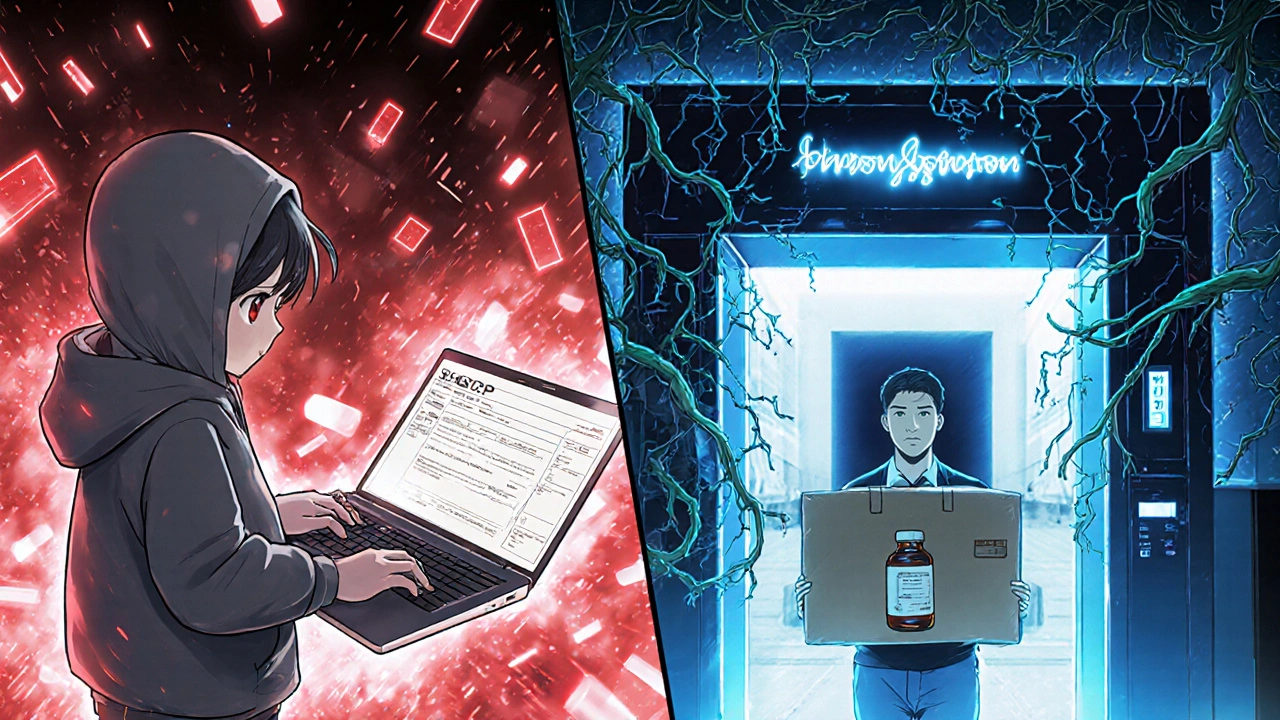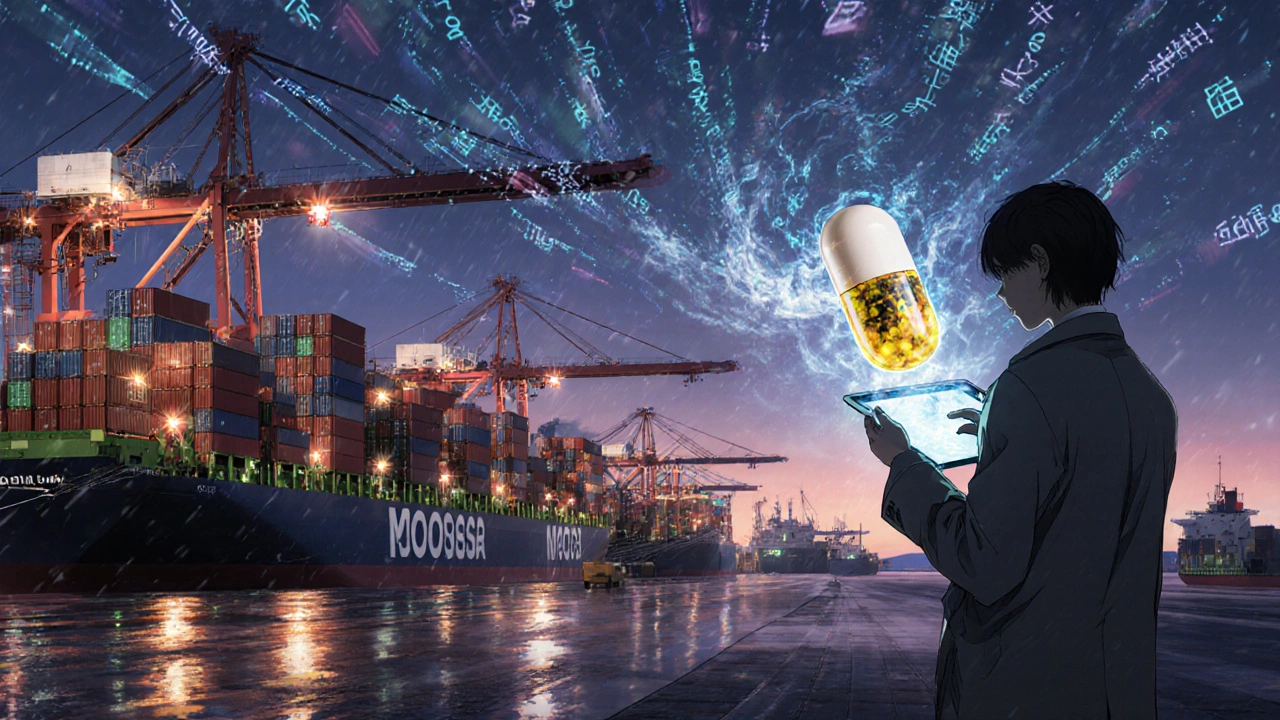Every year, over 100 million drug shipments enter the United States. Most come from overseas manufacturers - from India, China, Germany, and beyond. But how does the FDA make sure these drugs are safe, effective, and not counterfeit? The answer isn’t just random checks. It’s a complex, high-stakes system built on data, risk, and strict rules.
How the FDA Reviews Every Drug Shipment
The FDA doesn’t physically inspect every box that arrives at a port. That’s impossible. Instead, it uses a smart, automated system called Entry Review. Almost all drug shipments - about 98% - get screened electronically before they even land. The system looks at the product type, manufacturer history, past compliance records, and even the port of entry. If something looks off, the shipment gets flagged.What triggers a flag? A few things: incomplete paperwork, a manufacturer with past violations, a product that’s been detained before, or if it’s a high-risk drug like insulin, antibiotics, or injectables. Around 15.7% of all entries get pulled for deeper review. These aren’t random. They’re targeted based on real data.
Once flagged, the shipment is held intact. No one can open or distribute it until the FDA makes a decision. That’s not a delay - it’s a legal requirement. The FDA has three ways to check: a field exam (physically looking at the product), a label exam (checking if the packaging and instructions meet U.S. rules), or sampling (taking a few units to test in a lab).
What Gets Detained - And Why
In 2022, 14.3% of drug shipments that were physically examined got detained. That’s more than 1 in 7. But detention doesn’t mean automatic rejection. Some shipments are fixed - labels are corrected, paperwork is updated, or the product is retested. But 67.8% of detained shipments were eventually refused entry.Why? Common reasons include:
- Products not made in registered facilities
- Missing or incorrect labeling (like missing lot numbers or expiration dates)
- Contaminated ingredients - like the valsartan recall in 2018, where cancer-causing impurities slipped through
- Unapproved drugs sold as generics
- Products that don’t match the approved application
One of the biggest problems? Active pharmaceutical ingredients (APIs). Over 88% of APIs used in U.S. drugs come from overseas. If the API is bad, the whole pill is bad. And APIs are harder to trace than finished pills.
The Secure Supply Chain Pilot Program (SSCPP)
Not all companies get treated the same. The FDA runs a special program called the Secure Supply Chain Pilot Program. It’s for manufacturers with a perfect track record - no violations, no detentions, no recalls - for at least three years. These companies can get their drugs cleared in 24 to 48 hours instead of 7 to 10 days.As of late 2023, only 27 companies qualified. Big names like Johnson & Johnson use it. They say it cuts their supply chain variability from ±5 days to ±8 hours. That’s huge for just-in-time manufacturing. But it’s not open to everyone. Smaller companies, especially generic drug makers, can’t meet the bar. And that’s creating a two-tier system.

The End of the 0 Loophole
Until October 2023, there was a loophole. Shipments under $800 - called “de minimis” - were exempt from FDA review. That’s how counterfeit pills, unapproved weight-loss drugs, and even pill presses slipped into the country. People thought they were buying from a small online seller. In reality, many were coming from unregulated factories in China or India.In October 2023, the FDA and Customs shut that down. Now, every drug shipment - no matter how small or cheap - must be reviewed. That added about 350,000 new entries to the FDA’s workload. It’s a major shift. The Partnership for Safe Medicines estimates $4.3 billion in counterfeit drugs entered the U.S. in 2022. Most of those came through that $800 loophole.
Who’s Getting Hurt - And Who’s Helping
The new rules aren’t just affecting shady sellers. They’re hitting researchers, small biotech firms, and academic labs too. Scientists importing biological samples for research now face delays of 3 to 5 days and costs of $285 to $420 per shipment. The Association of American Medical Colleges says 63% of institutions are seeing significant delays.At the same time, big pharma companies are happy. Their compliance teams have more structure. The electronic entry system, launched in 2021, gives clearer feedback. Experienced importers say building a relationship with a specific FDA reviewer at a port can cut processing time by 22% to 35%.
But for small businesses? It’s rough. The cost of hiring a customs broker runs $285 to $450 per entry. And one mistake - wrong product code, missing registration number - can delay a shipment by nearly 5 days. According to CBP data, 28% of delays come from incorrect coding. That’s not incompetence. It’s complexity.

What’s Coming Next
The FDA isn’t standing still. It’s rolling out new tools:- AI risk tools - aiming to improve detection accuracy by 25% by 2025
- Blockchain pilots - testing digital ledgers to track drug movement from factory to pharmacy
- Expanded SSCPP - going from 27 to 50 participants by mid-2024, including contract manufacturers
- International alignment - working with the Pharmaceutical Inspection Co-operation Scheme (PIC/S) to match standards with Europe and other countries
Still, the system has gaps. The Government Accountability Office found only 4 of 17 key performance measures from the 2012 law have been fully implemented. And while the FDA inspects 1.2 million entries a year, it’s still only checking 1.2% of the total drug shipments entering the U.S. That means most drugs are cleared without ever being touched.
That’s the trade-off: safety vs. speed. The FDA can’t inspect everything. So it tries to catch the worst risks. Sometimes, it misses. But the system keeps getting smarter.
What Importers Need to Do
If you’re shipping drugs into the U.S., here’s what you need to get right:- Make sure your facility is registered with the FDA
- List every product you’re shipping
- Use the correct product code (FDA’s 4-digit code, not your internal SKU)
- Include a valid Affirmation of Compliance (A of C) with every shipment
- Submit your entry at least 15 minutes before arrival - no exceptions
Keep records for three years. One error can trigger an Import Alert - meaning every future shipment gets automatically detained until you prove you’ve fixed it. That’s a nightmare for supply chains.
Use the FDA’s Electronic Entry Interface Repository (EEIR). It’s updated every two weeks. And if you’re stuck, call the port-specific contact center. Average response time? Just 1.8 hours.
Bottom Line
The FDA’s import system isn’t perfect. It’s under-resourced, complex, and sometimes slow. But it’s also the most advanced drug safety net in the world. The elimination of the $800 loophole was a turning point. The Secure Supply Chain Pilot shows that compliance can be rewarded. And new tech like AI and blockchain could make it even stronger.For patients, that means fewer fake pills. For manufacturers, it means clearer rules - if you’re willing to play by them. And for everyone else? It’s a reminder: the drugs you take didn’t just appear on a shelf. They passed through a system designed to protect you - even if it’s not always visible.
How often does the FDA inspect imported drugs?
The FDA physically inspects only about 1.2% of the 100 million+ drug shipments entering the U.S. each year. The rest are reviewed electronically using risk-based tools. High-risk products - like insulin, antibiotics, or those from past-violating manufacturers - are more likely to be selected for physical inspection or sampling.
What happens if a drug shipment is detained?
If a shipment is detained, it’s held at the port until the FDA makes a decision. The importer can fix the issue - like correcting labeling or submitting missing paperwork - and request re-inspection. If the problem can’t be fixed, the shipment is refused entry and must be destroyed or returned at the importer’s expense. About 67.8% of detained shipments are ultimately refused.
Can I still import drugs from China or India?
Yes, as long as the manufacturer is registered with the FDA, the product is approved or listed, and all documentation is complete. Over 88% of active pharmaceutical ingredients used in U.S. drugs come from China and India. The issue isn’t the country - it’s compliance. Facilities with repeated violations may be placed on an Import Alert, which blocks all future shipments.
What is the Secure Supply Chain Pilot Program (SSCPP)?
The SSCPP is a voluntary program for manufacturers with a flawless compliance record for at least three years. Approved companies can import up to five products with minimal inspection - clearance takes 24 to 48 hours instead of 7 to 10 days. As of late 2023, only 27 companies qualified, including major firms like Johnson & Johnson.
Why did the FDA eliminate the $800 exemption?
Before October 2023, shipments under $800 didn’t need FDA review. This loophole was exploited to smuggle counterfeit medications, unapproved drugs, and even pill presses into the U.S. The FDA closed it to stop dangerous products from entering through small online packages. The change added roughly 350,000 new entries to the inspection system annually.
How can I avoid delays when importing drugs?
To avoid delays: use the correct FDA product code, submit complete and accurate paperwork (including Affirmation of Compliance), ensure your facility is registered, and submit your entry at least 15 minutes before arrival. Errors in labeling or registration cause nearly 40% of delays. Working with an experienced customs broker and building a relationship with FDA reviewers at your port can also reduce processing time.


Andrew Baggley
November 20, 2025 AT 00:44This system is actually way smarter than people give it credit for. The risk-based screening? Genius. They’re not wasting time on random boxes-they’re hunting the bad stuff. And shutting down the $800 loophole? Long overdue. I’ve seen those fake weight-loss pills pop up on Instagram like they’re selling sneakers. Now at least there’s a real barrier.
Big pharma’s happy, sure, but the real win is for patients. Fewer counterfeit insulin vials. Fewer contaminated antibiotics. That’s not bureaucracy-that’s lifesaving.
Frank Dahlmeyer
November 20, 2025 AT 02:22Let’s be real for a second-this whole system is built on a foundation of hope and half-baked data. Sure, they flag shipments based on history, but what happens when a factory in India gets a clean record for three years and then slips in a batch of tainted API? The FDA doesn’t have eyes everywhere, and no algorithm can replace boots on the ground. And don’t get me started on the 1.2% inspection rate-that’s like locking your front door but leaving the back window wide open.
Meanwhile, the SSCPP? A VIP pass for big corporations while small labs wait weeks for research samples. That’s not efficiency, that’s class warfare disguised as regulation. The FDA needs more inspectors, not more Excel sheets. AI won’t smell mold in a vial. Blockchain won’t stop a corrupt inspector from taking a bribe. Real safety means more people, more visits, more audits-not more buzzwords.
Paige Lund
November 21, 2025 AT 06:23Wow. So the government spends billions to make sure my Tylenol isn’t made in a basement in Shenzhen. Meanwhile, my local pharmacy still sells expired cough syrup. But hey, at least the FDA got the fancy AI now. Progress.
Kara Binning
November 21, 2025 AT 14:12Let me get this straight-we let China and India make 88% of our medicine, then we pretend we’re in control? This isn’t safety, it’s national surrender. We used to make drugs here. We used to have factories. Now we outsource our health to foreign labs with zero accountability. And the FDA’s solution? A pilot program for big corporations? That’s not fixing the problem-that’s letting the rich skip the line while the rest of us pray our pills don’t kill us.
They call it a supply chain. I call it a vulnerability. And if you think closing the $800 loophole fixed anything, you’re delusional. The real problem? We let our entire pharmaceutical industry get outsourced to countries that don’t give a damn about our kids. This isn’t regulation. It’s damage control after we gave away the farm.
Michael Petesch
November 23, 2025 AT 09:52It’s fascinating how this system mirrors global supply chain dynamics. The reliance on APIs from Asia reflects not just cost efficiency, but also the globalization of pharmaceutical manufacturing. What’s often overlooked is that many of these facilities are GMP-certified under PIC/S standards, which aligns with European and international norms. The real challenge isn’t the origin of the drugs-it’s the consistency of enforcement across jurisdictions.
The SSCPP is a compelling model for incentivizing compliance, but its exclusivity raises questions about equity. If the goal is public safety, then scalability and accessibility should be prioritized. Perhaps tiered compliance pathways, rather than binary approval, could bridge the gap between large corporations and smaller innovators. The FDA’s move toward blockchain is promising-if interoperability and data privacy are addressed properly.
Sam Reicks
November 25, 2025 AT 06:49fake news alert. the fda inspects 1.2% of shipments? so what? theyre lying. the real truth is the fda works with the big pharma companies to let bad drugs in because they own the regulators. you think theyre checking every vial? nah. theyre just making you think they are. the $800 loophole was a distraction. the real scam is the whole system. the ai? its trained on data from the same companies that get inspected. its a loop. and the ss cpp? only for the big guys because they pay off the right people. the scientists waiting for samples? theyre collateral damage. dont be fooled. this isnt safety. its control. and the people who run it? they dont want you to know how broken it is.
also i heard the fda uses microsoft excel to track everything. no joke.
Chuck Coffer
November 25, 2025 AT 14:42So let me get this straight-you’re proud that the FDA lets 98% of drugs slip through without a physical check? That’s not a system. That’s a gamble with people’s lives. And you think the SSCPP is fair? It’s a bribe for corporations that already have lawyers on speed dial. Meanwhile, a small lab in Ohio gets held up for weeks because someone typed ‘2345’ instead of ‘2346’ in the product code. That’s not complexity. That’s incompetence dressed up as policy.
And don’t even get me started on the ‘relationship with an FDA reviewer’ thing. You’re telling me your access to life-saving meds depends on whether your broker knows someone at the port? That’s not regulation. That’s corruption with a flowchart.
Michael Salmon
November 27, 2025 AT 14:051.2% inspection rate. That’s not oversight. That’s negligence. You call it risk-based? I call it statistical cowardice. If you’re not inspecting the majority of shipments, you’re not protecting public health-you’re playing Russian roulette with antibiotics and insulin. And the ‘improvement’ of AI? It’s trained on historical data from companies that’ve been caught before. So it’s basically learning how to let the same bad actors slip through again.
The SSCPP? A luxury club for pharma elites. The $800 loophole closure? A PR stunt that crushed researchers but did nothing to stop the real smuggling-because the big players still ship in bulk under false declarations. And don’t pretend the FDA has the manpower. They don’t. They’re underfunded, understaffed, and politically neutered. This system isn’t designed to protect you. It’s designed to look like it’s protecting you while the real profits keep flowing.